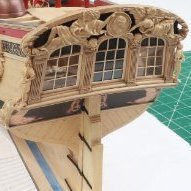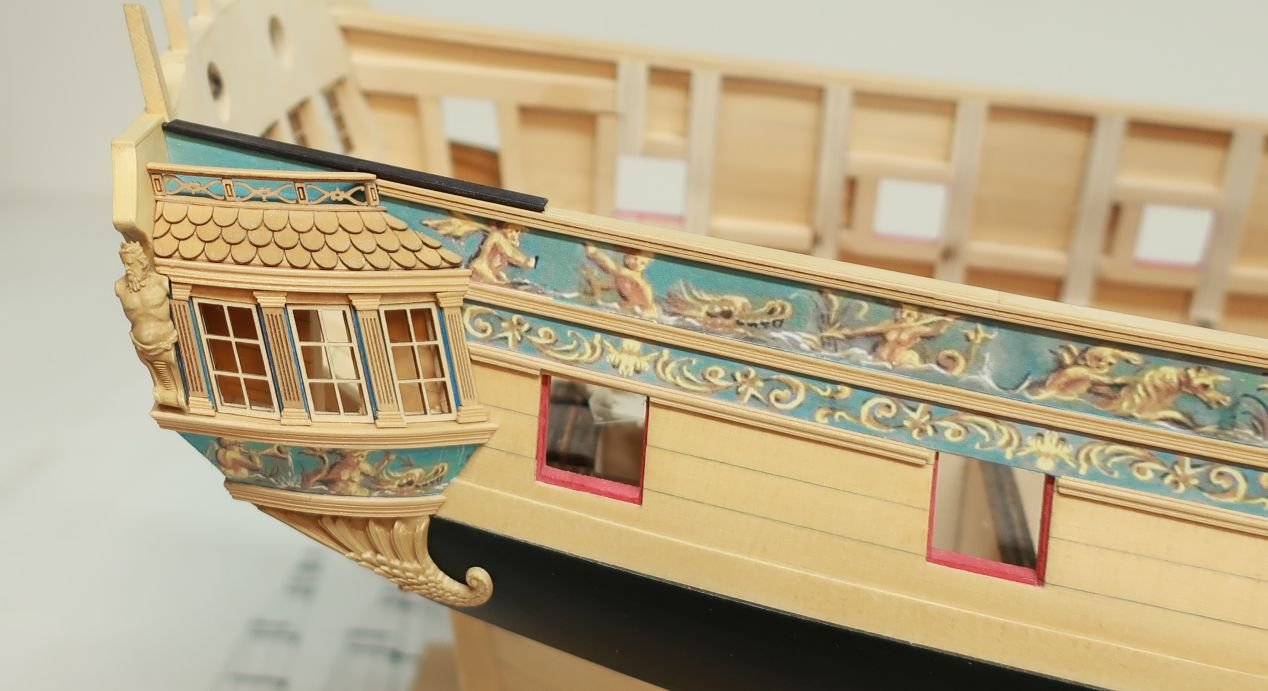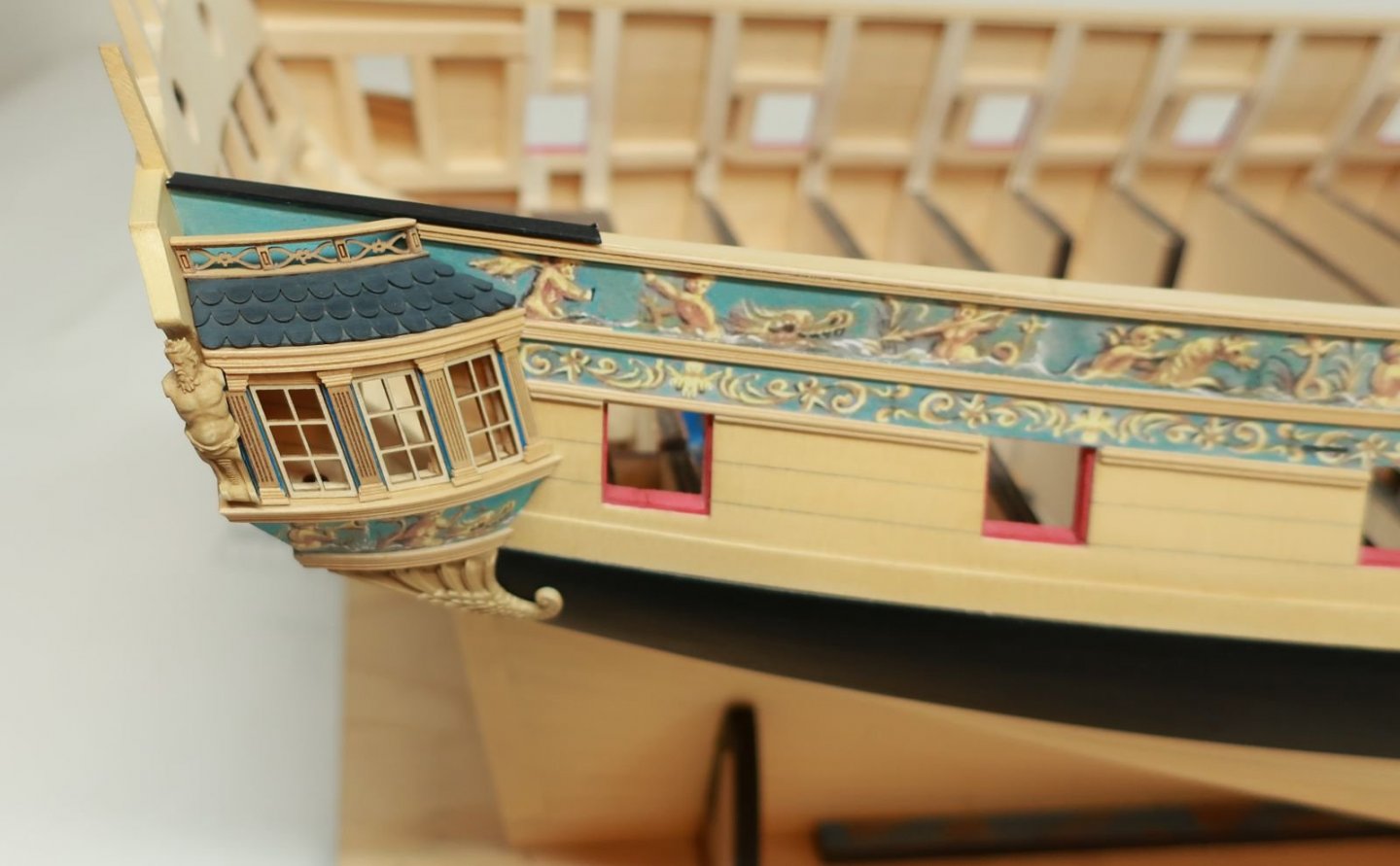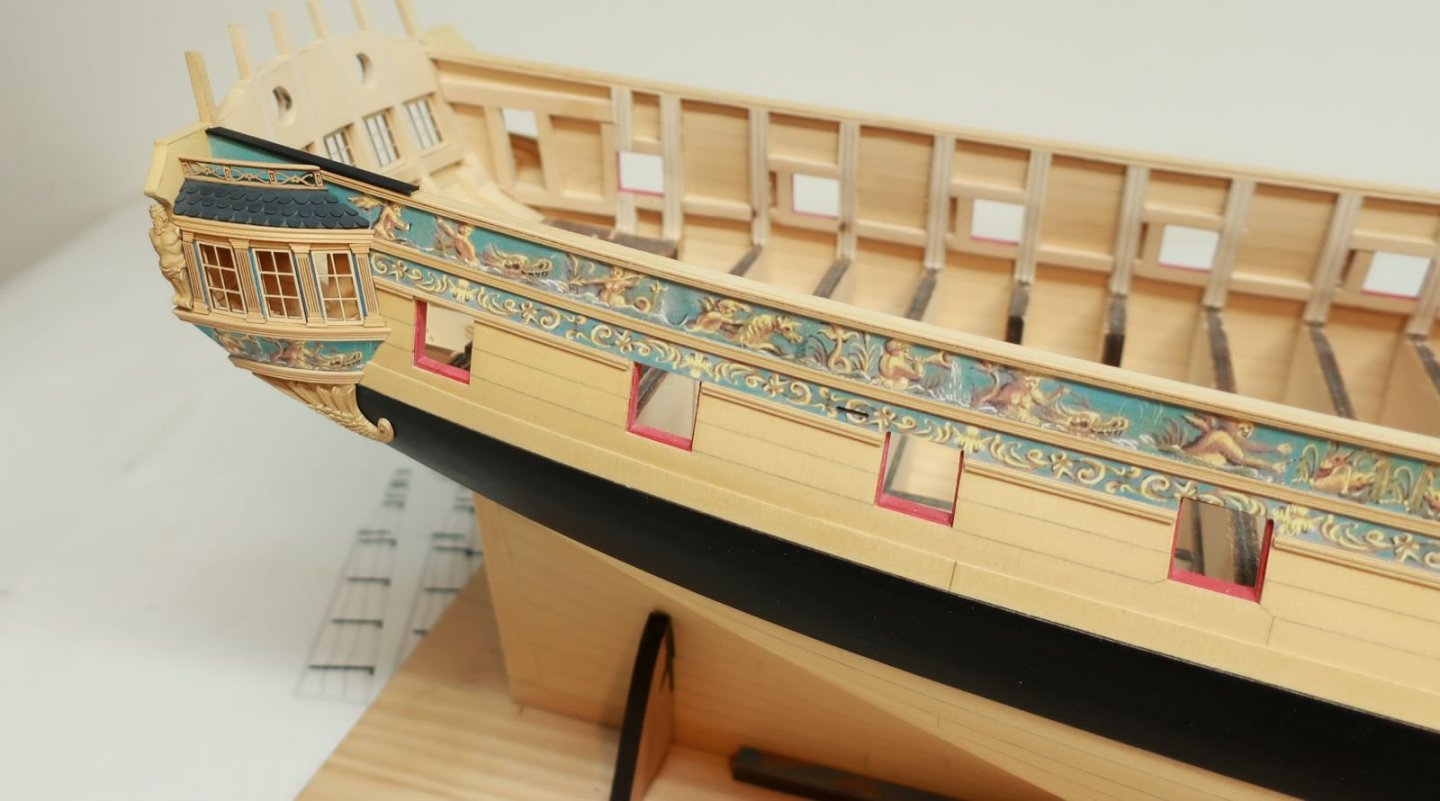-
Posts
9,678 -
Joined
-
Last visited
Content Type
Profiles
Forums
Gallery
Events
Everything posted by Chuck
-
Its really no more difficult than the Fair American or any other plank in bulkhead kit. You will do just fine. This project just has more details....if you use the laser cut parts it is just like any other kit. you just need to go slow and enjoy the ride. And with all of the help here you cant beat the experience of learning within a group and seeing the many different solutions presented for each challenge.
- 1,784 replies
-
- winchelsea
- Syren Ship Model Company
-
(and 1 more)
Tagged with:
-
Thanks no i wont be painting anything white. Unless you have a few other items painted white or use ivory its too stark. I have seen that however. With the friezes and everything else going on i dont want it too busy. But as you mentioned, there are plenty of options. It just depends on how much you want to deviate from the original contemporary model based on your own preferences.
- 1,784 replies
-
- winchelsea
- Syren Ship Model Company
-
(and 1 more)
Tagged with:
-
That looks really good. You should be very pleased.
- 160 replies
-
- cheerful
- Syren Ship Model Company
-
(and 1 more)
Tagged with:
-
Merry Christmass to all!!! Yes indeed...As I finish up the work for each chapter I will make all of the laser cut parts available that I used. This included the scrolls, windows, and parts for the qgalleries. No worries there. You can choose to buy them or not. You can always scratch build the parts for that chapter if that is what you want to do. You have both options. Chuck
- 1,784 replies
-
- winchelsea
- Syren Ship Model Company
-
(and 1 more)
Tagged with:
-
Nice steady progress. She will look great set into a diorama.
- 69 replies
-
- diorama
- Glad Tidings
-
(and 2 more)
Tagged with:
-
Better to use 6mm rather than anything too thin. The lite ply at national balsa is the stuff i use. Its what my Winnie is made from.
- 642 replies
-
- winchelsea
- Syren Ship Model Company
-
(and 1 more)
Tagged with:
-
Thanks. Its a fun project. Glad to see you join us.
- 1,784 replies
-
- winchelsea
- Syren Ship Model Company
-
(and 1 more)
Tagged with:
-

A Latina: Harvey Baltimore Clipper missing pieces
Chuck replied to Canuck8's topic in Wood ship model kits
Have you browsed the build logs for other al harvey kits. I am sure we have a whole bunch with pictures. Check out the index of build logs in the kit build logs forum. chuck -

Rabbet/Bearding lIne
Chuck replied to shortgrass's topic in Building, Framing, Planking and plating a ships hull and deck
Hard to say without a picture. The best way to determine that is to temporarily put the bulkheads on and follow the edge of each. The bulkhead edge would theoretically continue into your false keel at the same angles. Unfortunately, because its a pesky double planked hull that will complicate matters. -
Really nice progress Rusty....you will have her all planked up in no time.
- 642 replies
-
- winchelsea
- Syren Ship Model Company
-
(and 1 more)
Tagged with:
-

HMS Winchelsea (1764) 32 gun frigate GROUP PROJECT INFO
Chuck replied to Chuck's topic in Group Projects on Model Ship World
Im sure you could have scratched them just fine. Its just a time saver. Thanks for the order. I appreciate the support. -
Wonderful work with the swivels. Just great metal work.
- 231 replies
-
- model shipways
- armed virginia sloop
-
(and 1 more)
Tagged with:
-
I think it will look fantastic with the colors I just mailed you for the carvings. The frieze will look good too. You just need to wait until after planking is done to really experiment so you need to get back at it and start making some more sawdust.
- 1,784 replies
-
- winchelsea
- Syren Ship Model Company
-
(and 1 more)
Tagged with:
-
Its what you would expect. It costs a lot. Its different depending on what you buy. The easiest way to find out is to put stuff in your cart in my online store and then it will calculate it. You will find the exact price that way before you check out.
- 1,784 replies
-
- winchelsea
- Syren Ship Model Company
-
(and 1 more)
Tagged with:
-
Yes indeed. Luckily our models dont see the outside and any water. The cedar really works well and has a great color that is so complimentary with the use of boxwood. In fact, to point that out, I finished the qgallery on the starboard side. For the most part, all of the wood that makes up what you see on the qqallery is boxwood. It blends really well with the cedar. You get the benefit of the cheaper price so you can use it for planking and frames and other big stuff. Then like done here you can switch to the ever more expensive boxwood for the details and other fittings. In fact, most of the deck fittings and molding will all be done in boxwood. The qgallery roof rail is all laser cut from boxwood. You basically have to evenly space the four uprights which are at an angle leaning aft. There is a nice etched detail on each of them. These are super super tiny at only 1/16" wide give or take and 1/8" tall. Then the top rail is added. This is laser cut with an etched detail along the bottom to give it some depth. I sanded the laser char and rounded off the edges a bit. Then I glued it on top of the four uprights. Yes it a bit longer so you van adjust it to fit your model. Lastly, the three laser cut fancy "flowers" for lack of a better description were glued into the space provided for them. These are fragile. Only 1/64" thick and again soooo tiny. Dont even bother trying to remove the laser char from the edges. They will break. Just glue them in position. That is what I did. This completes all the work for the starboard side as described in chapter 3. Now to repeat this on the port side!!! Left natural and unpainted...just so you can see it. Its too bright for my tastes. I am going with the painted version. The painted version....weathered to look like a slate color....I may still lighten it up a bit. Overall the galleries came out well. But these are tricky with so many complex angles. I definitely recommend buying the laser cut pieces for these even if you are trying to build most everything from scratch. The windows and glazing and the columns with laser etched flutes etc. All of the laser cut and etched scrolls will be included too. The angles are all worked out for you and this will make building the qgalleries so much easier. These parts will be mostly boxwood for the cedar version and cherry for those building it in pear or some other darker wood. Oh and I added a scrap piece of painted strip to show you guys what the cap rail will eventually look like. This will be painted black and glued on top of the sheer much later in the project. After we finish planking inboard. Much later...but it shows how nice it will be finished off. Any questions or comments???
- 1,784 replies
-
- winchelsea
- Syren Ship Model Company
-
(and 1 more)
Tagged with:
-
You should be good to go. Everything is shaping up well Rusty. 😊
- 642 replies
-
- winchelsea
- Syren Ship Model Company
-
(and 1 more)
Tagged with:
-
The resin sets are now available.......The full sets are $120 including the figurehead. Stand alone figurehead will cost $22. I have also decided to ship the thin pieces for the cove like this. They are very fragile. Just use a sharp #11 blade to remove the thin backing. It will slice right off. Dont sand it off......cut it away.
-
Resin sets are now up on my site for sale. I am also selling the figureheads stand alone. Keep in mind the Christmas holiday so I may not be able to ship until after Xmas now. The admiral is giving me too many Santa Duties. Chuck
- 1,784 replies
-
- winchelsea
- Syren Ship Model Company
-
(and 1 more)
Tagged with:
-
For those building in Cherry or pear..... Here is what they will look like with a coat of OLD MASTERS fruitwood gel stain. I STRONGLY recommend that whether you are building in Yellow Cedar, Cherry or pear, that you apply a coat of this gel stain with a brush. Leave it sit for a minute or two. Then buff it off with another soft but clean brush or soft lint free cloth. It really does the trick and creates the finish you want. Below shown against some scrap Pear I had and left on a bit longer to get less contrast.
- 1,784 replies
-
- winchelsea
- Syren Ship Model Company
-
(and 1 more)
Tagged with:
About us
Modelshipworld - Advancing Ship Modeling through Research
SSL Secured
Your security is important for us so this Website is SSL-Secured
NRG Mailing Address
Nautical Research Guild
237 South Lincoln Street
Westmont IL, 60559-1917
Model Ship World ® and the MSW logo are Registered Trademarks, and belong to the Nautical Research Guild (United States Patent and Trademark Office: No. 6,929,264 & No. 6,929,274, registered Dec. 20, 2022)
Helpful Links
About the NRG
If you enjoy building ship models that are historically accurate as well as beautiful, then The Nautical Research Guild (NRG) is just right for you.
The Guild is a non-profit educational organization whose mission is to “Advance Ship Modeling Through Research”. We provide support to our members in their efforts to raise the quality of their model ships.
The Nautical Research Guild has published our world-renowned quarterly magazine, The Nautical Research Journal, since 1955. The pages of the Journal are full of articles by accomplished ship modelers who show you how they create those exquisite details on their models, and by maritime historians who show you the correct details to build. The Journal is available in both print and digital editions. Go to the NRG web site (www.thenrg.org) to download a complimentary digital copy of the Journal. The NRG also publishes plan sets, books and compilations of back issues of the Journal and the former Ships in Scale and Model Ship Builder magazines.







